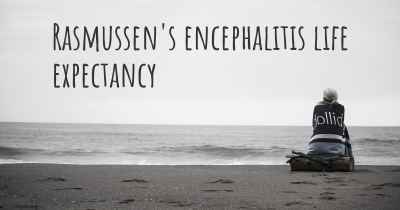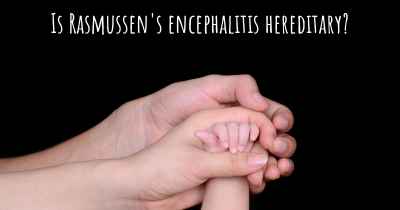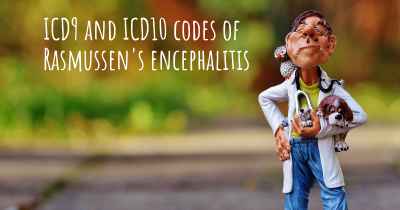What is the history of Rasmussen's encephalitis?
When was Rasmussen's encephalitis discovered? What is the story of this discovery? Was it coincidence or not?

Rasmussen's encephalitis:
Rasmussen's encephalitis is a rare neurological disorder characterized by inflammation of the brain, leading to seizures, progressive neurological deficits, and cognitive decline. It was first described by Theodore Rasmussen, a Canadian neurosurgeon, in 1958. The condition primarily affects children and young adults, typically between the ages of 2 and 14 years.
Symptoms and Progression:
The initial symptoms of Rasmussen's encephalitis often include focal seizures, which are seizures that start in a specific area of the brain. These seizures may be accompanied by weakness or loss of sensation on one side of the body. Over time, the seizures become more frequent and severe, leading to a decline in motor skills and cognitive abilities.
Pathology:
The exact cause of Rasmussen's encephalitis is still unknown. However, researchers believe that it may be an autoimmune disorder, where the body's immune system mistakenly attacks healthy brain tissue. The inflammation in the brain leads to the destruction of neurons and the formation of glial cells, which are non-neuronal cells that support and protect neurons.
Diagnosis:
Diagnosing Rasmussen's encephalitis can be challenging as it shares similarities with other neurological conditions. A comprehensive evaluation is necessary, including medical history, physical examination, neurological tests, and brain imaging studies such as magnetic resonance imaging (MRI) and positron emission tomography (PET) scans. Additionally, a brain biopsy may be performed to confirm the diagnosis.
Treatment:
There is no cure for Rasmussen's encephalitis, and treatment aims to control seizures and manage symptoms. Antiepileptic drugs (AEDs) are typically prescribed to reduce seizure activity. However, in many cases, AEDs may not provide adequate seizure control. In such instances, surgical interventions, such as hemispherectomy or functional hemispherectomy, may be considered. These procedures involve removing or disconnecting the affected hemisphere of the brain to prevent seizures from spreading.
Prognosis:
The prognosis for individuals with Rasmussen's encephalitis varies. Without intervention, the disease typically progresses, leading to severe neurological deficits and cognitive impairment. However, early diagnosis and appropriate treatment can help slow down the progression of the disease and improve quality of life. Following surgery, some individuals experience a significant reduction in seizures and improvement in motor and cognitive function.
Research and Future Directions:
Due to the rarity of Rasmussen's encephalitis, research on the condition is limited. However, ongoing studies aim to better understand the underlying mechanisms of the disease and develop targeted therapies. Immune-modulating treatments, such as intravenous immunoglobulin (IVIG) and corticosteroids, are being investigated as potential options to suppress the immune response and reduce inflammation in the brain.
Conclusion:
Rasmussen's encephalitis is a rare and debilitating neurological disorder characterized by inflammation of the brain. While the exact cause remains unknown, it is believed to be an autoimmune condition. Early diagnosis and appropriate treatment are crucial in managing the disease and improving outcomes. Ongoing research offers hope for the development of more effective therapies in the future.








